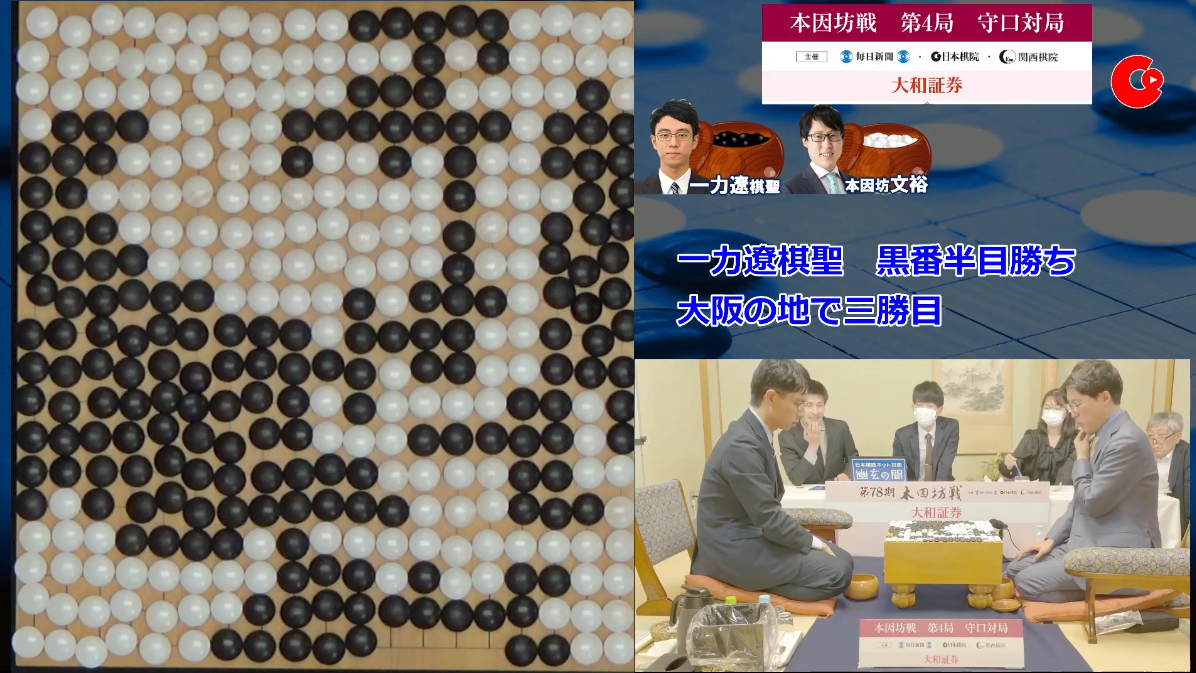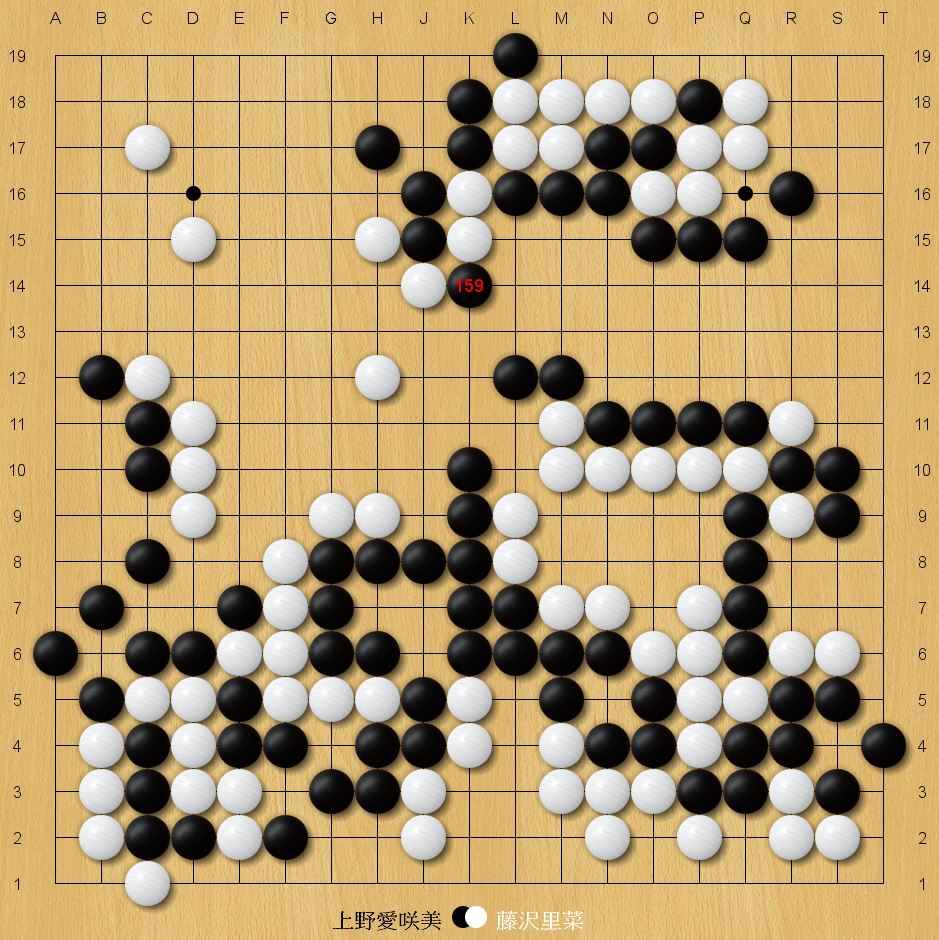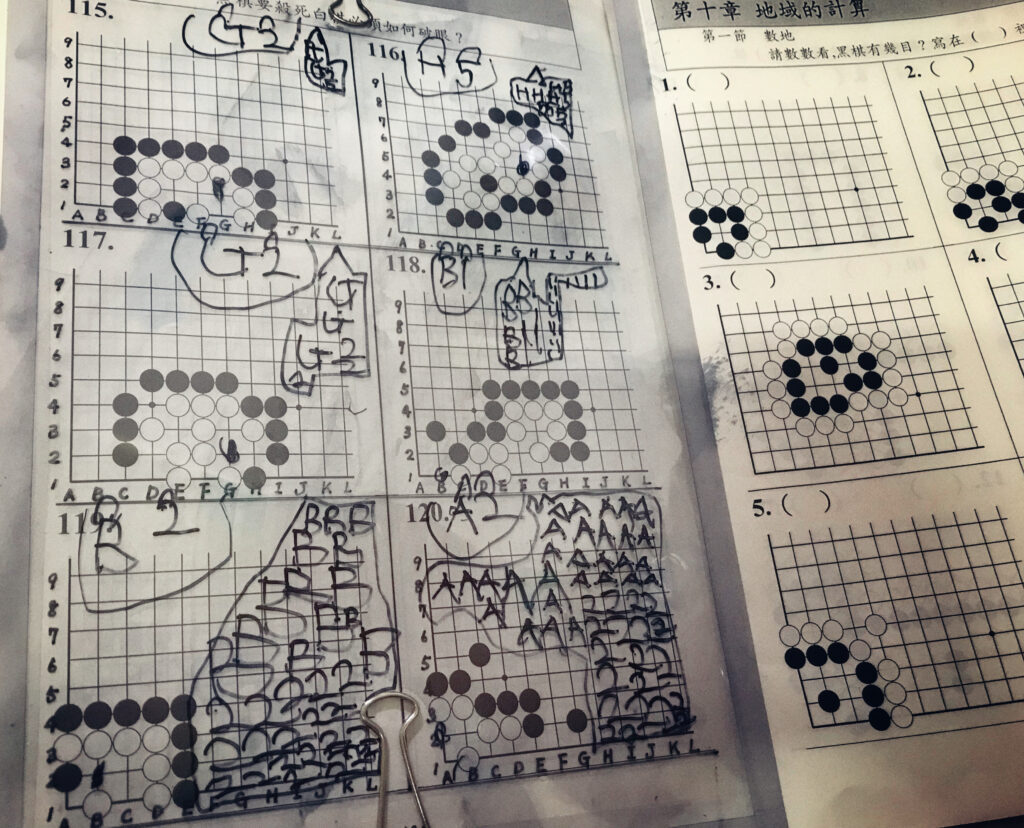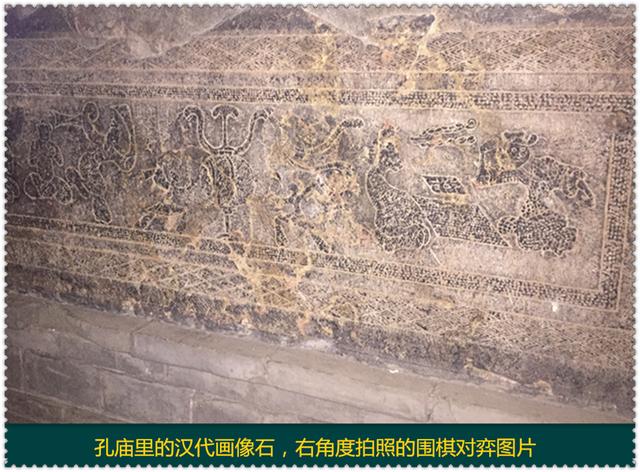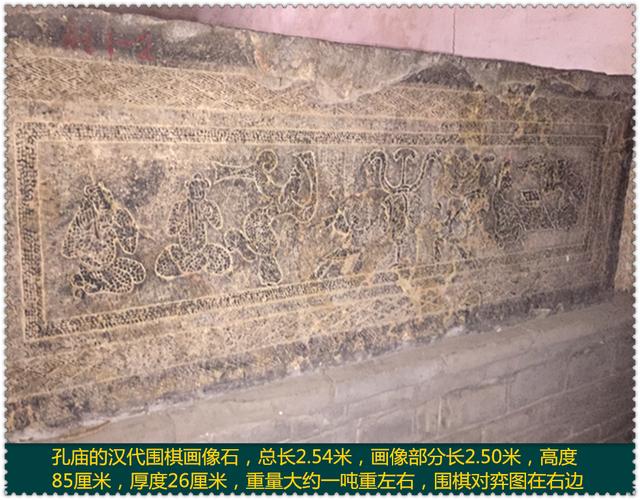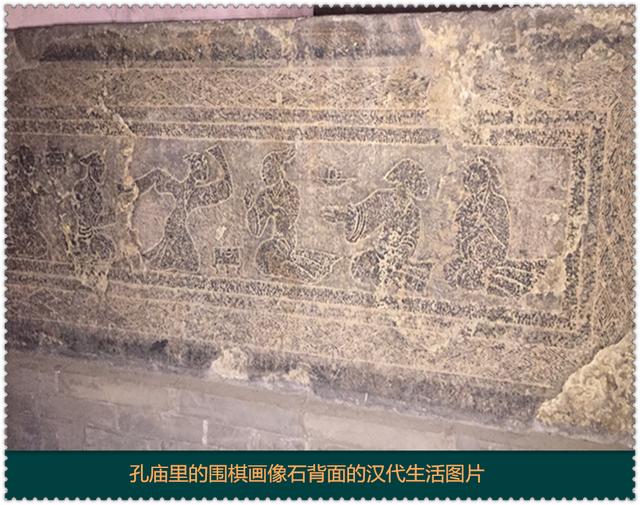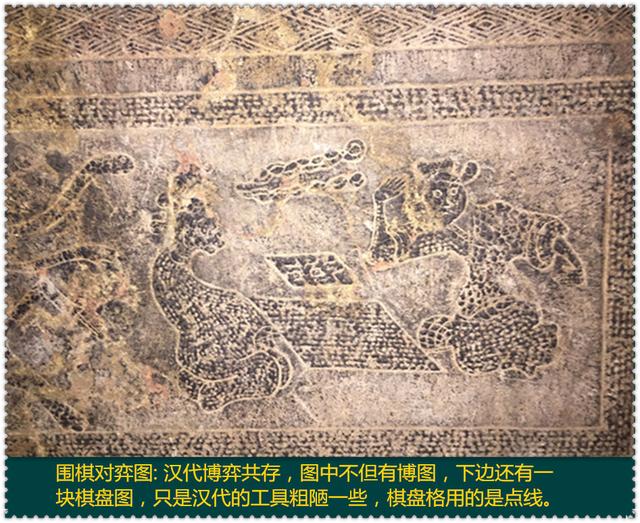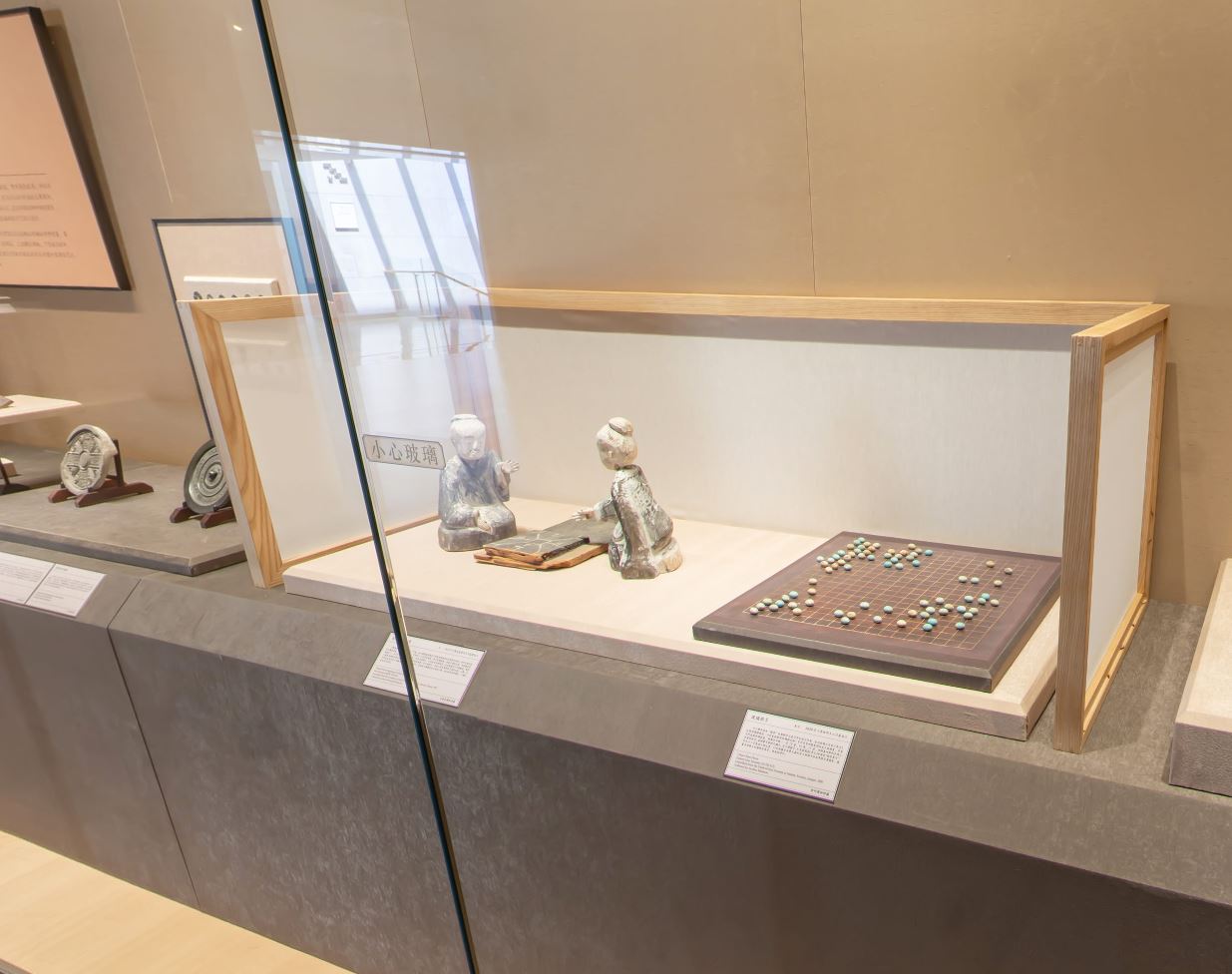Besides this being a news for Ichiriki Ryo now had a lead of 3 to 1 against Iyama Yuta (just 1 more win to get the Honinbo title), the scoring of this game also showed a quite rare situation, when they played more than 361 moves (total 364 moves for this game). One side completely filled up during manual scoring, and had to count stones off the board.
In the case of this game, it was filled to one side with 4 space left on the board for black, and 3 extra white stones off the board, hence 4 vs -3, so black win by 0.5 in the end { 4 - (-3) - 6.5 komi}. (If you found odd that the total count are 360 stones, but there are 364 moves, it is because they run out of stones, so they had to exchange two prisoners during the final dame filling phase in order to finish the game)
The sgf record can be found here http://eidogo.com/#Pbj2YrFZ:0,364
BTW, this is also a game where the Japanese rule and the Chinese rule give different results. With 6.5 komi, the Japanese rule gives B+0.5, but with 7.5 komi in the Chinese rule, it is W+0.5 (or W+1/4 子 with Chinese half counting of total 184 black area => {184 - 3.75 - 180.5 = -0.25}). Also notice, this is not solely because the Chinese rule has more komi, but more to do with white plays the last move. In games where black plays the last move, the result might be the same (cases with seki and how the last ko is filled can raise more tricky situations and differences).
